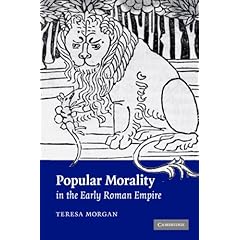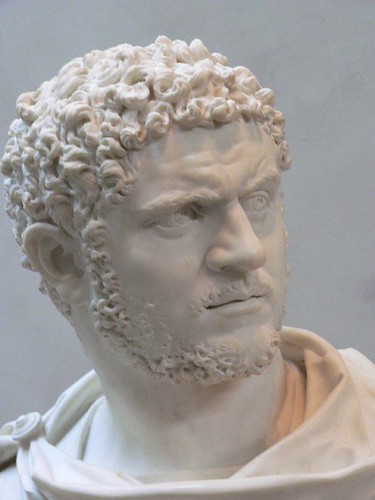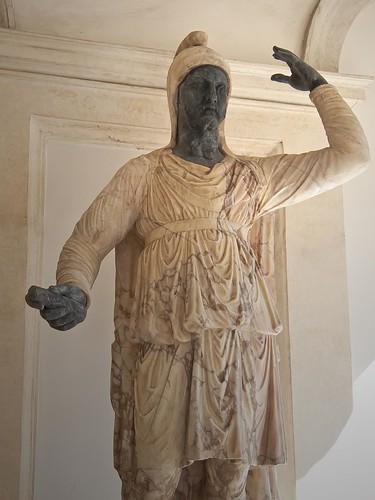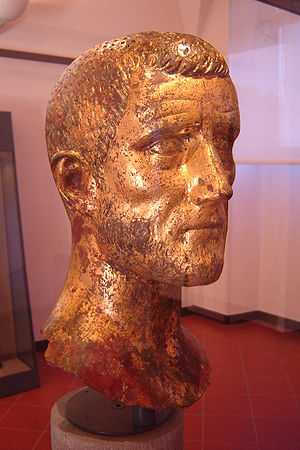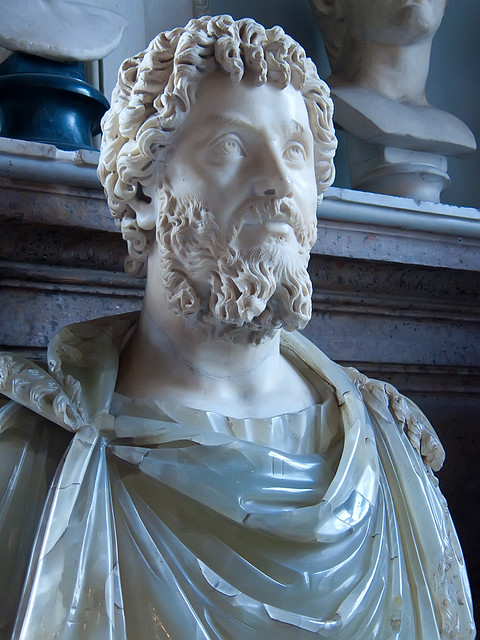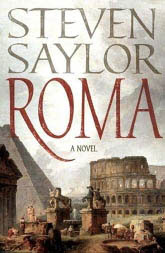
My enthusiasm for Steven Saylor's work dates back to the 1990s when I found a used copy of an audiobook of his detective novel "Arms of Nemesis" at the campus used book store.
I found his writing immersed me in the world of 1
st century BCE Rome like no one else, with, perhaps, the exception of Colleen McCullough.
I snapped up as many of Steven's books as I could and soon felt I was almost a confidante to his hero, Gordianus The Finder.
I found his books not only entertaining but filled with fascinating glimpses of events that really happened and served as starting points for me to conduct further research about this empire that our own culture has, in many respects, so closely emulated.
When I heard Steven was shifting gears a little and focusing his efforts on an epic novel, I could hardly wait for it to be released. I was even more pleased to find that the unabridged audio version would be available for download since I have more time on my commute than I have time or energy to read after getting home from work.
I downloaded a copy from Audible.com and embarked on Steven's latest adventure. I was surprised to discover Steven went all the way back to "prehistoric" times to introduce the winged phallus amulet of gold that would become the thread tying each successive generation in the story together.
As the story progresses, I vicariously became a citizen of Roma and experienced its history from a resident's viewpoint. Most novels I have read about the Roman Republic and Empire focus on the military conquests as viewed from the perspective of a famous general or emperor since conquest created the building blocks of Roman civilization. However, the average resident of Roma heard about these great conquests from messengers and gossips in the forum. The cataclysmic events of Cannae or Pharsalus happened out in the distant provinces or on the frontier. They provided interesting fodder for discussion but events within the city itself were of far more immediate concern.
So, "Roma" is filled with vignettes of characters dealing with the political and social turmoil swirling about its citizens within the city from day to day and from one generation to the next. Beneath it all simmers the class struggle between the noble patricians and the common plebians that seems to escalate with each generation. By focusing on events that shaped the culture and belief systems of the Romans themselves, Steven gives us a window into their thoughts as they grappled with the social upheavals that beset their classical world.
My main regret was that, due to the huge span of time covered by the novel, I could not linger with any characters for any length of time. Steven does such a wonderful job of characterization that my brief encounters were populated with fascinating individuals that I regretted leaving so soon, as the story, like the relentless current of the Tiber River, swept me along. It's like being invited to a banquet but being rushed along so that you can only sample a handful of succulent hors d'oeuvres and never get a chance to sit down and relish the main course.
I hope Steven will consider casting some of his character groups into full fledged novels of their own. I particularly liked the slave and Vestal Virgin who became lovers during the first sack of Rome when they were among the few defenders atop the Capitoline Hill. Since I have concentrated most of my study on the late Republican Period, I was unaware of the extent of the first sack. I always assumed the sack was over in a few days like most sacks. I didn't realize it went on for seven long months.
I also did not realize that the Veii question was so disruptive. I knew the Romans had conquered Veii but I assumed they simply added its people to the expanding Republic. I didn't realize the people of Veii were sold away into slavery and the city was left abandoned. Perhaps its people were treated so harshly because of the legendary massacre of the 300 Fabii at Cremora. Anyway, the hotly debated question became whether to rebuild Rome or to transfer her entire population to the empty city of Veii only twelve miles away. These events not only revealed interesting details often overlooked in so-called "epic" novels but provided a rich context to help the reader understand the complexity of the Roman psyche and the politics resulting from it.
The poisoning trials of 331 BCE also served as a basis for another interesting vignette. I had never heard of them before and since I knew Steven based his work on meticulous research I knew that this incident must have a historical basis. So, I researched it further and found a reference to the prosecutions in Livy:
"After many leading citizens had died from the same disease, a slave-girl gave
information to the curule aediles that the reason for this high mortality
was the poisons prepared and administered by the Roman matrons.
On investigation they found about twenty matrons, including patrician
ladies, in the act of brewing poisons, which they declared were
salutary. On being forced to drink their own concoctions to prove
the charges false, they perished by their own wickedness. Following
this, a hundred and seventy more were found guilty of the same
offense."
This incident alone could provide sufficient suspense for a novel in its own right.
I was also intrigued by the interactions among the characters involved with Plautus' playwriting activities. I found the characterization of Publius Cornelius Scipio with his luxurious mane of chesnut hair much more fascinating than the man I imagined when I gazed upon the strained face and bald head of Scipio's extant bust. Steven’s Scipio was truly the personification of a "Roman Alexander".
The vivid portrayal of the riots surrounding the murder of Tiberius Gracchus also brought the turmoil of that period to life for me. As I read about one of the characters making a flailing descent from the Tarpeian Rock, grasping at other men clutching roots and outcroppings in an attempt to break their fall, I couldn't help but visualize their desperation and recall my own view from the promontory the modern Romans advertise as the Tarpeian Rock that overlooks the remains of the Forum Romanum. Then I shuddered at the thought of trying to make my way across a corpse-glutted Tiber to relative safety on the far bank. These images will definitely remain with me in my future studies of this fascinating period of history.




